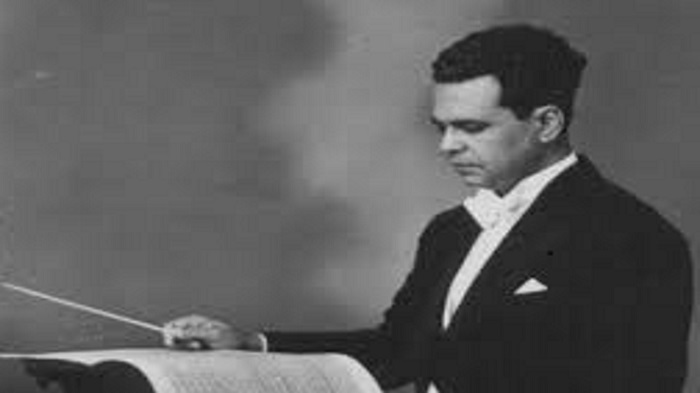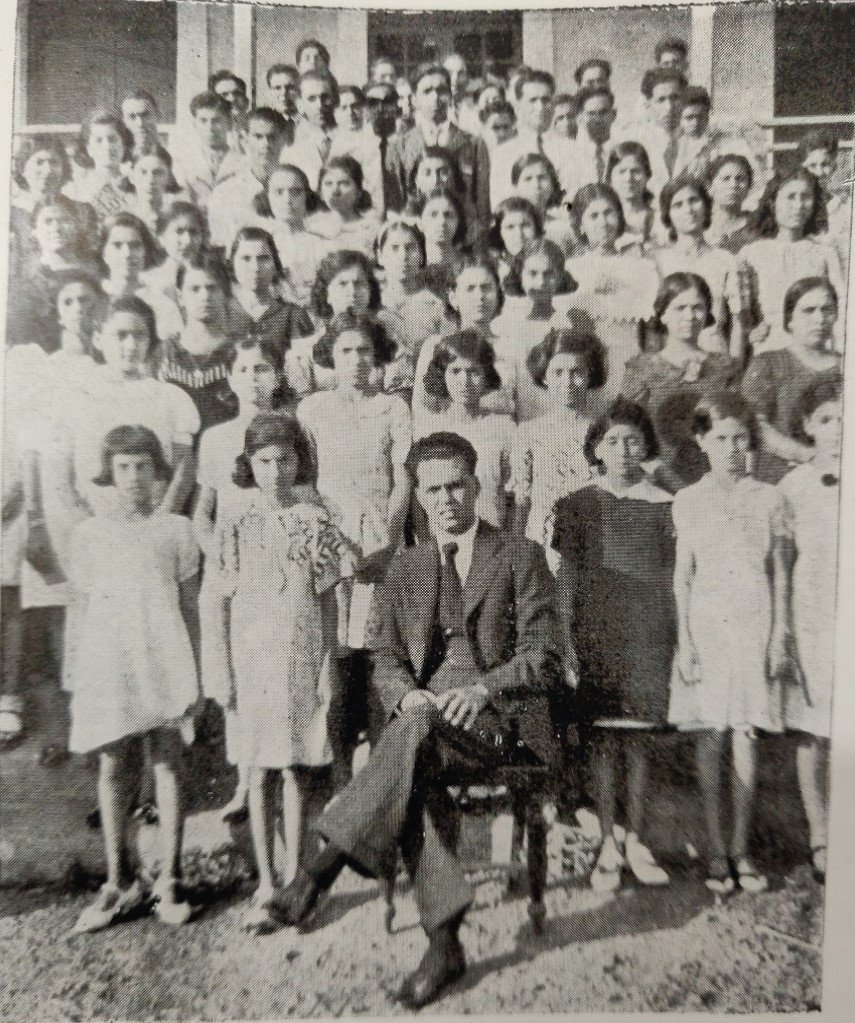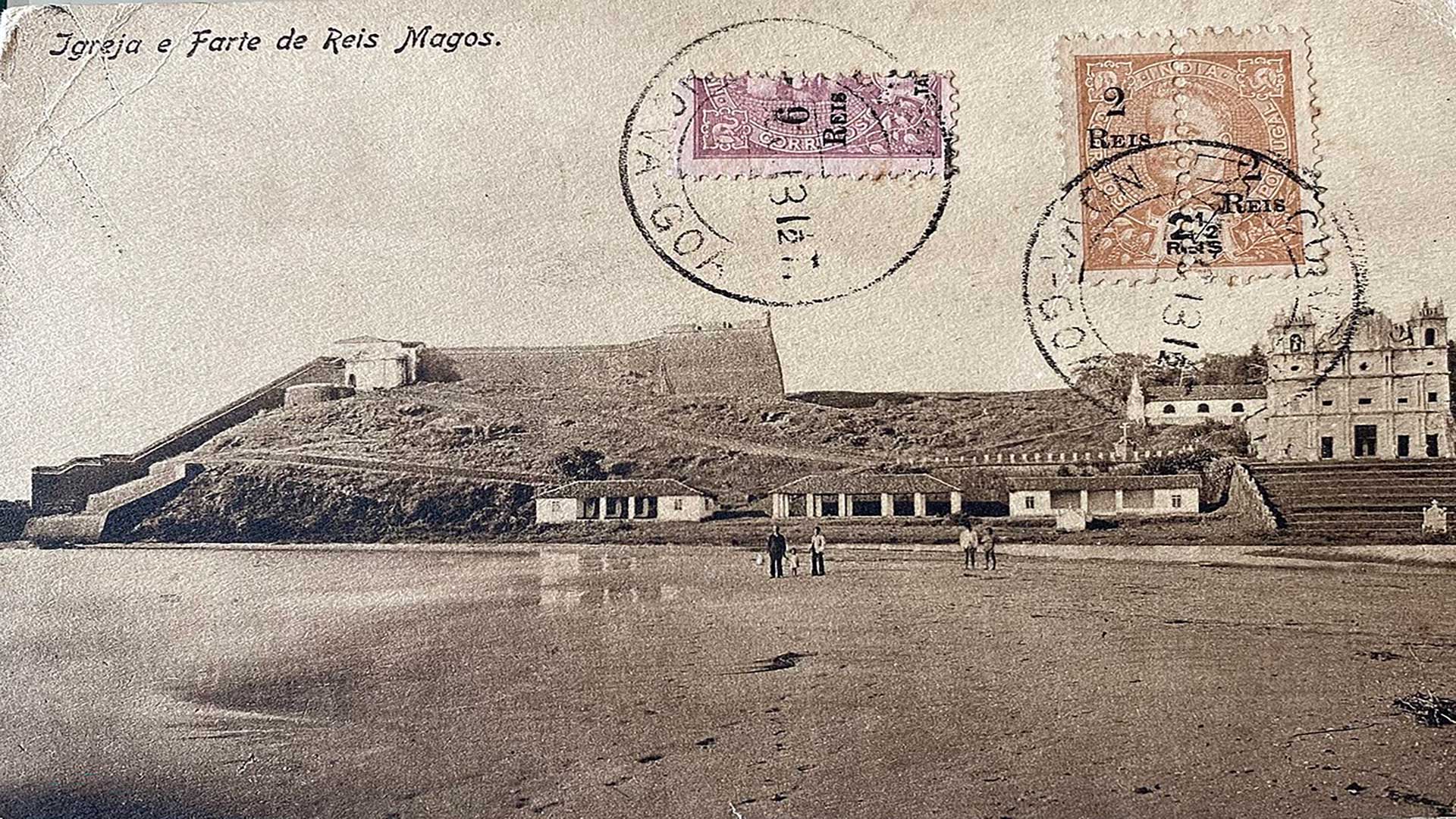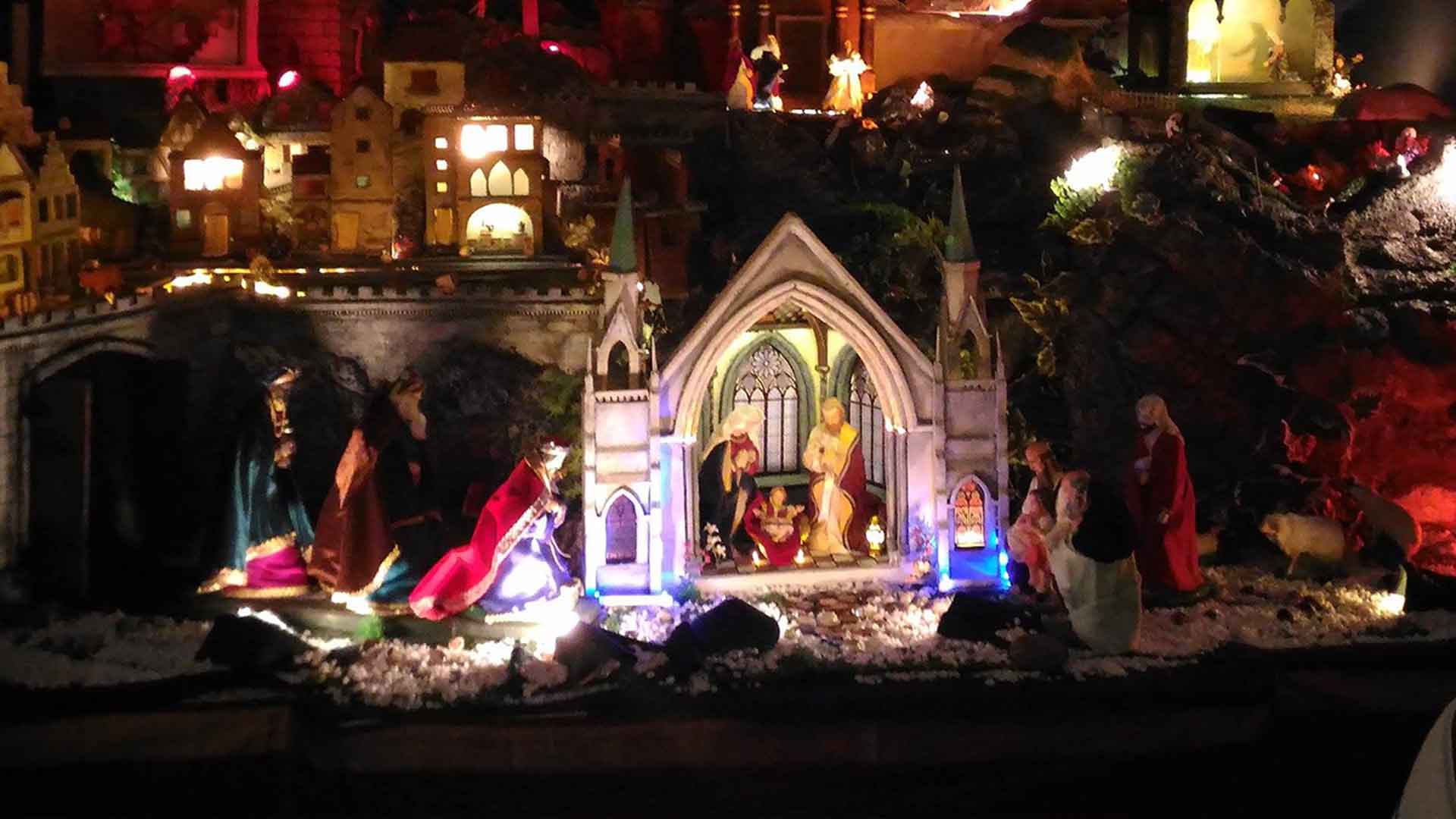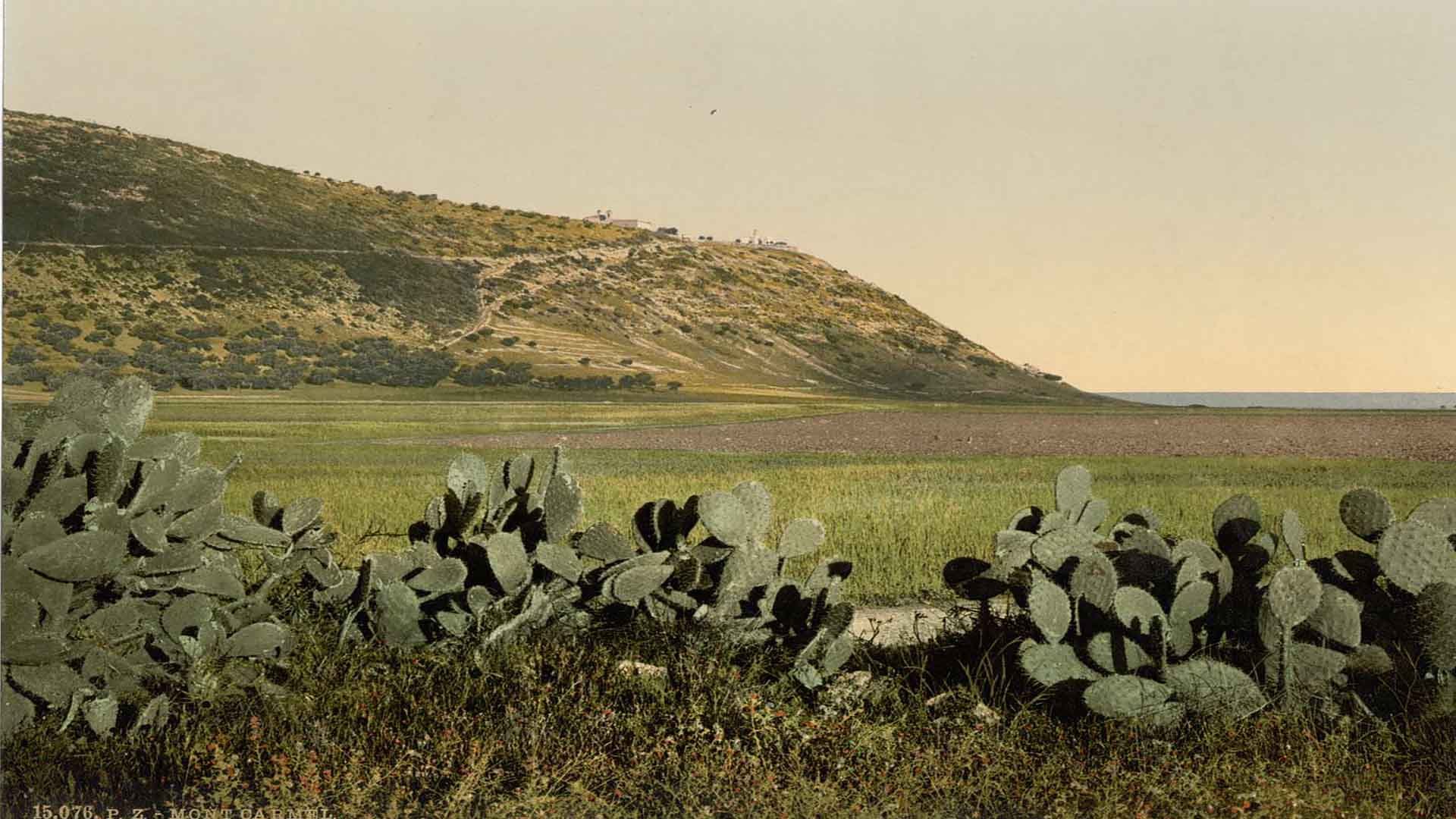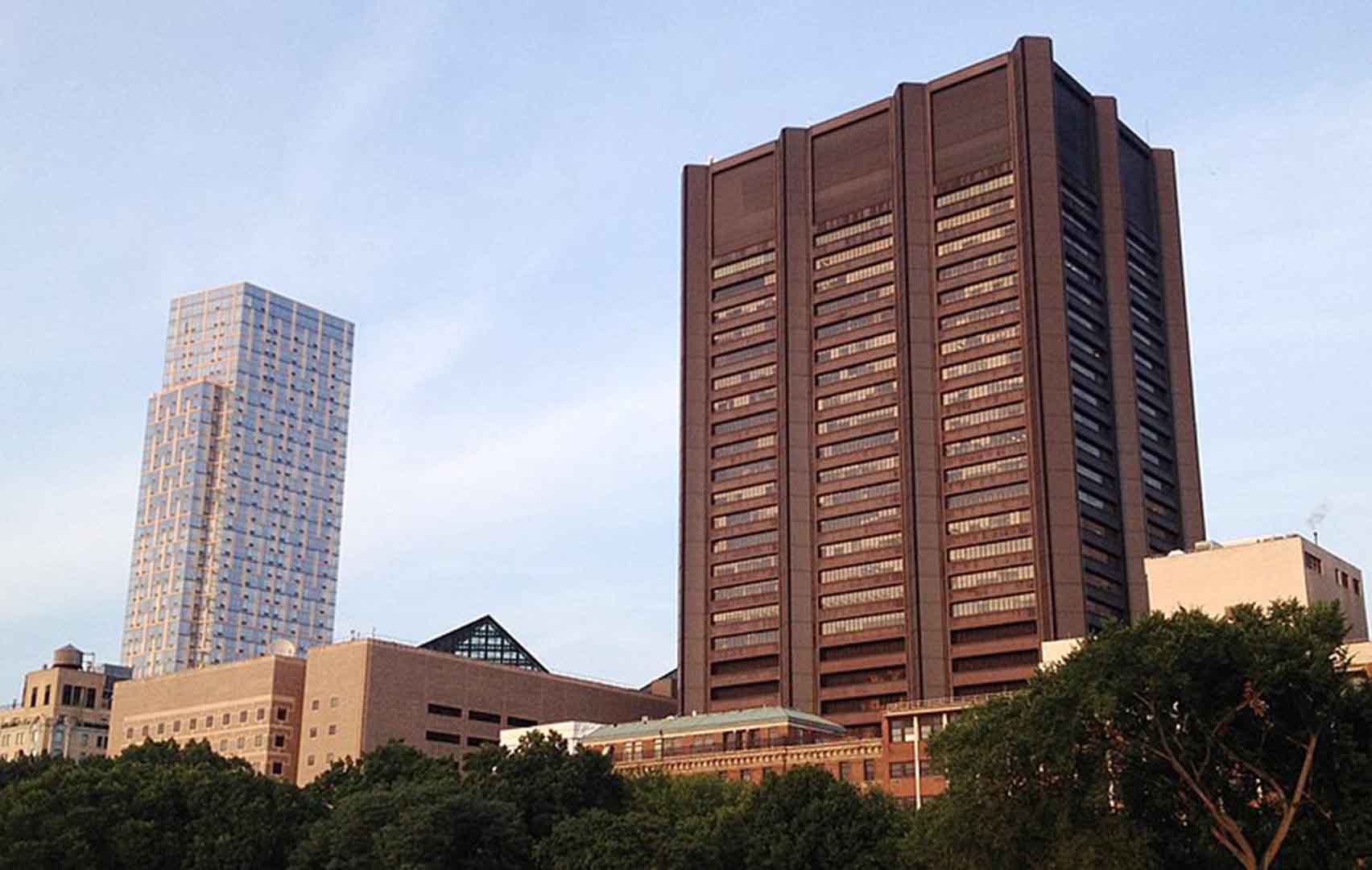The Place to Celebrate Christmas
Have you ever wondered about the best place to celebrate Christmas?
In my growing years I would often hear overseas relatives sing the praises of Christmas celebrations in Europe; it made me feel that something was amiss in Goa. And last Sunday, Zelia, a plump and contented lady, sixty-plus, living in a suburb of Lisbon, boomed in the churchyard, ‘Here it doesn’t feel like Christmas at all. Back home, you will find shop windows decorated by now, and people rushing about their Christmas shopping.’
No feelings of inadequacy on my part this time round. If that is what she feels, so be it, I thought, and it took me back twenty years to my own reservations about Lent in the Portuguese capital. I remember saying then to Mario el mexicano, a university pal and churchgoer, ‘Back home, we have the Way of the Cross from our city church perched on a hillock to the Archbishop’s Palace on another hilltop. It’s unmistakable; it really makes one feel it is Lent.’
People are entitled to their individual feelings, aren’t they? And God can touch the core of our being in any situation we may be. Ours is not a rectilinear world; and like the heavenly bodies we can go in curves, yet reach the destination the Creator has planned for us. After all, whatever our weaknesses – to quote Yeats, the Irish bard – He who is wrapped in purple robes, with planets in His care, ha[s] pity even on the least of things asleep upon a chair….
But for our part it is better not to lose sight of the Ultimate Reality. At Christmas, the crib, the star, the tree and the lights – however beautiful; the carols – howsoever melodious; the sweets, no matter how delicious – and the little joys they all afford us – should not be an end in themselves.
Rather, our crib and star competitions could help us promote healthy relationships; our tall and intensely decorated trees, to gaze heavenward; the shiny decorative lights we display in our homes, to reflect the state of our souls; the carols we sing, to foster peace, goodwill and harmony among us mortals; and all the eats and drinks that we prepare could well be an expression of the profound joy and love we share with our family and friends.
And what shall we say about the ever-present Santa Claus and his gifts?
A few days ago, a young television journalist interviewing passers-by in the street came up to me, thundering with great expectation, ‘Sir, tell us what Santa Claus means to you and your children!’ And perhaps to her surprise, I said, nonchalantly, ‘Very little.’
Santa Claus means very little to me and my family. This is one institution that has almost become an end in itself – hardly a reminder of the good old St Nicholas, and of Jesus Christ, alas, none at all! Santa has not sanctified but altogether commercialized and secularized Christmas. How I wish Santa had not sought to turn this feast of extreme tenderness, extremely banal.
We cannot let the Christmas mystery turn banal. No doubt, Jesus was born in a humble stable, into a poor family. Simple shepherds were the first witnesses to this event. But – as the Catechism of the Catholic Church points out – ‘in this poverty heaven’s glory was made manifest.’ And the Church never tires of singing the glory of this night:
The Virgin today brings into the world the Eternal
And the earth offers a cave to the Inaccessible.
The Angels and shepherds praise him
And the magi advance with the star,
For you are born for us,
Little Child, God eternal!
This verse from Kontakion of Romanos the Melodist sums up that Mystery-in-swaddling-clothes. And, as the Catechism further remarks, ‘from the swaddling clothes of his birth to the vinegar of his Passion and the shroud of his Resurrection, everything in Jesus’ life was a sign of his mystery’ – a mystery that certainly calls for deep contemplation.
It is of supreme importance, particularly to contemporary man, to note that the Christmas mystery is richer than the richest of shop windows. And we needn’t go to the ends of the Earth to realize this: When we participate in the Mass this day, with a pure and contrite heart, we will come upon the experience like a benediction. Then we shall see that our hearts are the best Crib for the Little Child, God eternal, to be born in and also the best place to celebrate Christmas!
(Published as Editorial, The Stella Maris Bulletin, December 2008; and reprinted by Herald, 22 December 2008, and Renovação, 1-15 January 2009)
THE MAESTRO’S TOUCH
Three cheers to the first of our very own Von Trapps – on their comeback and creditable stage performance during the birth centenary celebrations of their patriarch António de Figueiredo. This Goan maestro was perhaps singly responsible for setting the Western musical scene in our land on a firm professional footing, way back in the mid-1950s. I heard he was quite a sensation in those days and exerted an important influence on the Goan people.
I heard he was quite a sensation in those days and exerted an important influence on the Goan people.
I vividly remember my parents recommending the Goa Philharmonic Choir and Symphony Orchestra, which was to perform under his baton at the Menezes Braganza hall, in 1973. It was a veritable feast for my senses as an eight year old, never mind the minimal acoustic conditions of the venue. The concert also proved to be the beginning of my love for western classical music, especially as a result of its many replays, possible for us as a family, thanks to my father who had taken the initiative to audio-record it on our spanking new Hitachi!
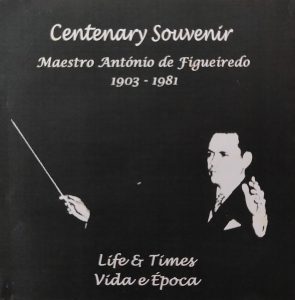 How I wish the local stations of All India Radio and Doordarshan had taped the proceedings of this birth centenary for the larger Goan family at home and abroad! And as a more eloquent public homage to the maestro, it would in the fitness of things to have Kala Academy’s open-air auditorium named after him who was the founder-director of the Academia de Música (now Kala Academy’s department of Western Music), and similarly, a prominent city and village street too; to have a bust of the maestro installed in the premises of the Kala Academy, scholarships instituted in his memory, and to entrust a musicologist with the job of writing a biography and putting together his musical works. The centenary CD released by his admirers is a step in the right direction, but only for starters!
How I wish the local stations of All India Radio and Doordarshan had taped the proceedings of this birth centenary for the larger Goan family at home and abroad! And as a more eloquent public homage to the maestro, it would in the fitness of things to have Kala Academy’s open-air auditorium named after him who was the founder-director of the Academia de Música (now Kala Academy’s department of Western Music), and similarly, a prominent city and village street too; to have a bust of the maestro installed in the premises of the Kala Academy, scholarships instituted in his memory, and to entrust a musicologist with the job of writing a biography and putting together his musical works. The centenary CD released by his admirers is a step in the right direction, but only for starters!
The concert also proved to be the beginning of my love for western classical music, especially as a result of its many replays, possible for us as a family, thanks to my father who had taken the initiative to audio-record it on our spanking new Hitachi!
(The Navhind Times, Panjim, 22 August 2003)
Fort and Church of Reis Magos
On the right bank of the Mandovi, facing Panjim's river front boulevard at Campal, stand a fort and church called Reis Magos (The Magi), landscaped by red rocks, yellow-green vegetation and a fishing village. The turreted walls and baroque façade in this chromatic setting come out soft in the morning rays, turn awesome at noon, and are a sight to behold when silhouetted by the setting sun or bathed by the moon.
Perched on the south-eastern edge of the Bardez tableland, the citadel was constructed in 1551, enlarged on different occasions, and finally re-erected in 1707. It is now X-shaped with two inner courtyards. Together with Gaspar Dias, its counterpart on the opposite shore, it was meant to provide the second line of defence for the capital should the enemy manage to sail past the Aguada and Cabo forts. Interestingly, the fort that acted as a minor jail until 1993 was where, over a century ago, Madhav Rao, the rajah of Sawantwadi stayed when on an official visit to Goa with a retinue of 1500 men, 1000 horses and 4 elephants.
A perennial nearby spring with abundant potable water catered to the fort; but to nourish the soldiery with "living water" the Franciscans erected a church alongside its walls in 1555. This three-storied edifice (the taluka's first), with its impressive light of steps, was part of their now extinct mission centre. Their college promoted Konkani studies, and produced eminent churchmen like Dom Matheus de Castro, Goa's first bishop. It was also there that both viceroys and bishops sojourned prior to assuming office upon their arrival in Goa, or after relinquishing it. Some of them lay buried within the church precincts; the walled parish graveyard nestling on an intermediate level between the church and the fort came much later.
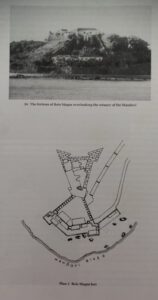
This historic locale, called Verem, is now better known for its annual celebration of the feast of the Epiphany on 6 January. No viceroy, bishop or nobleman now attends; it is only three village boys in gala attire who still play the Magi. They descend from the ramparts (earlier they did it on horseback), carrying their precious gifts and the solemn Mass begins even amidst the din of the traditional fête outside. Only trinkets though they sold- and not gold, frankincense or myrrh in the tradition of the Magi the fair that was once worthy of the fort's enclosure has now become a roadside affair. But the joy it brings to all that throng to it! What form all these customs will take when the fort turns into a heritage hotel soon, only time will tell!
Banner: https://rb.gy/xjugos
First published in 'Heritage Point', Panjim Plus, 1-15 January 2002, p. 6
Yuletide Recollections
Solemnising the dogma of the Immaculate Conception at the city church (8 December) was a good spiritual preparation for Christmas just round the corner. The angelic music of the Salves at twilight prefigured the celestial choirs intoning "Gloria in Excelsis Deo" a fortnight later. Caroling house to house, late in the evening, was the order the season (the proceeds went to Mother Teresa's Asilo). City clubs like Nacional and Vasco da Gama organised carol singing competitions, balls and street dances. The household would be agog with the Crib, the Star and the Christmas Tree.
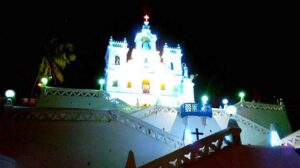
24th December: after the Midnight Mass, we used to head straight for the pillow to herald Pai-Natal (Christmas Father) in our sleep. We woke up the next morning, excited about the festa da família (family celebration) – more recently, a veritable family reunion at lunch or supper! We particularly relished the consoada (meaning, the season's sweets, in Goa) comprising traditional homemade delicacies that Avó (Grandmother) Leonor insisted on having for Christmas.
The days that followed, up to 6th January, feast day of the Reis Magos (the Magi, or Three Wise Kings) at Verem, saw Panjimites on their evening beat around the city. They invariably walked up to Timoteo's mechanised crib, or drove to Francisco Martins' at Ribandar. Other private houses and public squares used colourful lighting.
Once upon a time, that was my Christmas agenda. Much of it has gone but some of it has remained in the form of a musical reverie, thanks to Jim Reeves, my childhood star who still sings "Jingle Bells", "Silent Night", "Mary's Boy Child" and "White Christmas".
(First published in Panjim Plus, 16-31 December 2001)
The Fragrance of Carmel (Concl.)
Significance of the Carmelite way
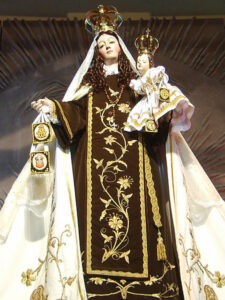 There are many Carmelite Orders, both male and female, in the Catholic Church of the Roman and Eastern Rites. The original Carmelites were an Order founded on Mount Carmel, by Berthold, a Crusader from Calabria, about the year 1155 A.D. They constitute the Order of the Brothers of Our Lady of Mount Carmel (Ordo Fratrum Beatissimæ Virginis Mariæ de Monte Carmelo, abbreviated O. Carm.) who were constrained to leave the area and settle in Europe.
There are many Carmelite Orders, both male and female, in the Catholic Church of the Roman and Eastern Rites. The original Carmelites were an Order founded on Mount Carmel, by Berthold, a Crusader from Calabria, about the year 1155 A.D. They constitute the Order of the Brothers of Our Lady of Mount Carmel (Ordo Fratrum Beatissimæ Virginis Mariæ de Monte Carmelo, abbreviated O. Carm.) who were constrained to leave the area and settle in Europe.
Thereafter the Order underwent many reform movements, the most important one being the one initiated by Teresa of Ávila and John of the Cross. They founded the Order of Discalced Carmelites (O.C.D.), also called Barefooted Carmelites, to differentiate them from their predecessors who were ‘calced’. There is also an Order of Cloistered Carmel nuns.
Interestingly, the Stella Maris Monastery presently on Mount Carmel in Palestine is considered the spiritual headquarters of the Carmelite Order.
The Carmelite charism is an important jewel in the Catholic crown. Here are some reasons why:
SPIRITUALITY: Centuries of Carmelite history shows us that longing and living for God is the essence of their spirituality. It is clear from the numerous exemplary lives of their confreres that it is indeed possible to encounter God very intimately. This is an experience attained through simplicity, detachment, contemplation, prayer and work, all of which produces an apostolic spirit, in many ways similar to the life led by Our Lady.
MODELS: The Carmelite Order has given several saints to the Catholic Church, among them mystic authors like Teresa of Ávila (1515-82) and John of the Cross (1542-91), who shine out as Doctors of the Church. Centuries later, Thérèse of Lisieux (1873-97, also known as Teresa of the Child Jesus and the Holy Face) whose highly influential model of sanctity marked by a simple and practical approach to the spiritual life also won her the title of Doctor of the Church.
Elsewhere in the world, the richness of the Carmelite spirituality was evidenced by Kuriakose Elias Chavara (1805-71), a Syro-Malabar priest of the Carmelites of Mary Immaculate (C.M.I), from Kerala, and by Edith Stein (1891-1942), a German Jewish philosopher who converted to Christianity and became a Discalced Carmelite nun.
LITERATURE: Several Carmelites have endowed us with the fruits of their study and contemplation, the chief among them being St Teresa of Ávila and St John of the Cross. To the former belong many poetical works and spiritual classics like The Way of Perfection and The Interior Castle, besides her engrossing autobiography; the latter author has to his credit poetic works like Spiritual Canticle and Dark Night of the Soul, and prose works like The Ascent of Mount Carmel, among others. Thérèse of Lisieux’s autobiography, The Story of a Soul, was published posthumously. In the monastery where she lived, Edith Stein was assigned the task of completing her autobiography, Life in a Jewish Family; she also wrote Finite and Eternal Being – An Ascent to the Meaning of Being and Science of the Cross, commenting on St John of the Cross and the Carmelite understanding of the depths of the soul.
MESSAGE TO THE WORLD: At the Apparitions in Fátima, whose full import the world is yet to understand, Our Lady of Mount Carmel appeared to Sister Lúcia holding the Brown Scapular. The famous visionary, who later became a Carmelite nun, stated that our Divine Mother wished everyone would wear it as a sign of their ‘consecration to her Immaculate Heart.’ For sure, the sacramental is a quiet and comforting reminder that Our Lady is always there for us.
There is therefore no doubt that we are in the presence of a prophetic Religious Order: The Carmelites!
The Fragrance of Carmel (Part II)
Pentecost, a red-letter day
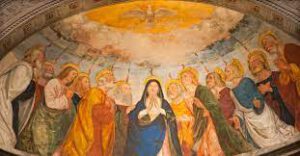 According to a pious tradition, supported by the liturgy of the Church, on the day of Pentecost a group of men devoted to the holy prophets Elijah and Elisha embraced Christianity. They were disciples of St John the Baptist who had prepared them in view of the advent of the Saviour. They left Jerusalem for Mount Carmel and there they erected a sanctuary to the Virgin Mary, at the same place where Elijah had seen the Cloud. They called themselves Brothers of the Blessed Mary of the Mount Carmel.
According to a pious tradition, supported by the liturgy of the Church, on the day of Pentecost a group of men devoted to the holy prophets Elijah and Elisha embraced Christianity. They were disciples of St John the Baptist who had prepared them in view of the advent of the Saviour. They left Jerusalem for Mount Carmel and there they erected a sanctuary to the Virgin Mary, at the same place where Elijah had seen the Cloud. They called themselves Brothers of the Blessed Mary of the Mount Carmel.
These Brothers would suffer much at the hands of the Roman Emperor. At the time of the Muslim conquest of the Holy Land, the Crusaders freed them. And soon many pilgrims began joining the Order, among them St Cyril, St Angelo and St Simon Stock. Later, when the Brothers began to be persecuted once again, St Cyril, who was then the General, had recourse to Our Lady who spoke thus:
‘It is the desire of My Son and Mine that the Carmelite Order be not only a light for Palestine and Syria but that it may illumine the whole world. Hence, I attracted you to it and shall attract numerous children from all the nations of the world.’
Truly, the Order flourished in various countries. However, in the twelfth century there were many misunderstandings against it in the West.
St Simon Stock
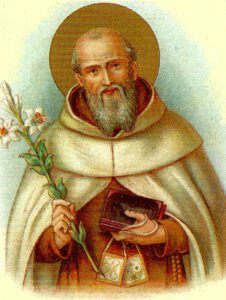 In 1251, Simon Stock, weighed down by age and austerity – he had lived 20 years in the empty trunk of a tree, as penance – went to Cambridge to inaugurate a new Carmelite convent. Meanwhile, his soul suffered a lot in view of the opposition that his Order suffered in his country.
In 1251, Simon Stock, weighed down by age and austerity – he had lived 20 years in the empty trunk of a tree, as penance – went to Cambridge to inaugurate a new Carmelite convent. Meanwhile, his soul suffered a lot in view of the opposition that his Order suffered in his country.
On the night of 16 July 1251, at the height of his suffering, St Simon was praying hard; his fervent prayer was transformed into a marvellous hymn:
Flower of Carmel,
Tall vine blossom laden;
Splendour of heaven,
Childbearing yet maiden.
None equals thee.
Mother so tender,
Who no man didst know,
On Carmel's children
Thy favours bestow.
Star of the Sea.
Strong stem of Jesse,
Who bore one bright flower,
Be ever near us
And guard us each hour,
who serve thee here.
Purest of lilies,
That flowers among thorns,
Bring help to the true heart
That in weakness turns
and trusts in thee.
Strongest of armour,
We trust in thy might:
Under thy mantle,
Hard press'd in the fight,
we call to thee.
Our way uncertain,
Surrounded by foes,
Unfailing counsel
You give to those
who turn to thee.
O gentle Mother
Who in Carmel reigns,
Share with your servants
That gladness you gained
and now enjoy.
Hail, Gate of Heaven,
With glory now crowned,
Bring us to safety
Where thy Son is found,
true joy to see.
Amen. (Alleluia)
The Saint prayed and sang all night. At the first sign of dawn, Our Lady appeared to him, surrounded by the angels, dressed in the habit of the Carmel. She smiled and brought in her virginal hands the Scapular of the Order, with which she clothed the man of God, saying: ‘This is a privilege for you and all the Carmelites. Whoever dies wearing this scapular shall not fall into hell.’
Of course, we cannot be carried away by the false idea that the mere wearing of the scapular is sufficient to win us Heaven. It allows us to hope; we must live a Christian life, fulfilling the Commandments!
Saturday Privilege
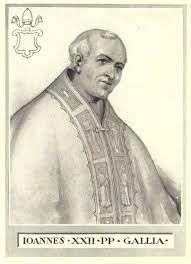 In 1316, the Virgin appeared to Cardinal Tiago who, on the second day of the vision, was elected Pope bearing the name John XXII. She spoke to him of a Sabbatine or ‘privilege John XXII’, which was approved and confirmed by Pope Clement VII ("Ex clementi", 12/8/1530), Pope St Pius V ("Superna dispositione", 18/2/1566), Pope Gregory XIII ("Ut laudes", 18/9/1577), and others, and also by the Holy Roman General Inquisition under Pope Paul V (20/1/1613).
In 1316, the Virgin appeared to Cardinal Tiago who, on the second day of the vision, was elected Pope bearing the name John XXII. She spoke to him of a Sabbatine or ‘privilege John XXII’, which was approved and confirmed by Pope Clement VII ("Ex clementi", 12/8/1530), Pope St Pius V ("Superna dispositione", 18/2/1566), Pope Gregory XIII ("Ut laudes", 18/9/1577), and others, and also by the Holy Roman General Inquisition under Pope Paul V (20/1/1613).
Accordingly, ‘it is permitted to the Carmelite Fathers to preach that the Christian people may piously believe in the help which the souls of brothers and members, who have departed this life in charity, have worn in life the scapular, have ever observed chastity [according to one’s state], have recited the Little Hours [of the Blessed Virgin], or, if they cannot read, have observed the fast days of the Church, and have abstained from flesh meat on Wednesdays and Saturdays (except when Christmas falls on such days), may derive after death — especially on Saturdays, the day consecrated by the Church to the Blessed Virgin — through the unceasing intercession of Mary, her pious petitions, her merits, and her special protection.’ (Cf. summary approved by the Congregation of Indulgences on 4 July 1908).
(Talk delivered at Regina Angelorum Cultural Centre, Panjim)
Tomorrow: Significance of the devotion for our day and age
The Fragrance of Carmel (1)
Carmel is a mount that figures in the Old Testament. Devotion to Our Lady began there, indirectly, with Prophet Elijah (also called Elias); it culminated in the formation of the Religious Order of the Carmelites in the thirteenth century. It is a fragrance we are still enjoying!
In 1 Kings 19: 16B, 19-21, we meet Elijah, a prophet who lived in Israel nine centuries before Christ. He proclaimed Yahweh, the one true God of the Israelites, against Baal, a false god of the Canaanites. God worked miracles through Elijah as a sign that he was His favoured one. Because of the sins committed in Israel, the Prophet appeared before the evil king Acab and announced a terrible chastisement. There followed a drought throughout the kingdom.
First resurrection
Elijah withdrew to Sarepta and was helped by a poor and honest widow. She had only flour and oil for herself and her son to consume, after which they expected to die. But she counted the Prophet in and the reward was that flour and oil multiplied in the containers. This is a lesson in heroic faith and confidence that we must have in God.
But then, the son died and, all agonised, the woman said to the Prophet: ‘What did I do, oh man of God? Did you come to my house to remind me of my sins and kill my son?’ Elijah called out to God and the Lord heard his prayer: ‘the little boy’s soul returned to him and he won back his life.’ This was the first miracle of resurrection we see in the Old Testament.
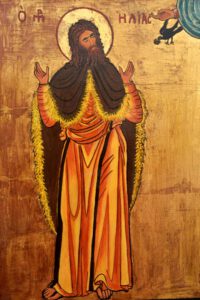 Combative spirit
Combative spirit
After three years in which the kingdom was without dew or rain, Elijah was before the king again. The king asked him: ‘Are you the troublemaker in Israel?’ In a typical example of holy daring or courage, Elijah answered: ‘It is not me who disturbed Israel but you and the house of your father, by abandoning the Lord’s commandments and following Baal.’ Then, turning to the people, he said: ‘When are you going to stop making the mistake of turning to the Lord and to the idol of Baal all at once?’ If the Lord is God, follow him; if Baal is it, follow him.’
Elijah challenged the prophets of Baal to work a miracle. They failed. The people were dumbstruck. Elijah then worked a prodigious miracle on Mount Carmel, bringing fire from heaven for the holocaust, and wood and stones to erect the altar. And the 450 false prophets of Baal, the main responsible for the people’s sins, ‘and Elijah brought them down to the brook Kishon and killed them there.’ (3 Kings: 18: 40) – an example of combativeness for God, a trait lacking in modern man.
Prefiguring the Immaculate Conception
After this healthy and admirable eradication, Elijah began to pray on the Mount. After he implored God to stop the terrible drought, a little cloud began rising from the sea, which soon caused a great shower to fall (3 Kings: 18: 44). This little cloud is interpreted as the symbol of Our Lady and Her Immaculate Conception – because, just as the light and winged cloud rose from the salty sea, without a trace of its bitterness, the Virgin Mary emerged faultless and immaculate from the sea of fallen humanity. Elijah understood this symbolism and was the first to venerate Our Lady.
Elijah’s was snatched from this earth by a chariot of fire. Before that he threw his mantle upon Elisha, who then lived on Mount Carmel. Centuries later, Elijah appeared at the Transfiguration of Our Lord on Mount Tabor and it is believed that he (together with Enoch) will return at the end of the world, to combat the Anti-Christ.
(Talk at Regina Angelorum Cultural Centre, Panjim)
(To be continued: St Simon Stock and the Carmelites – Significance for our day and age)
Fresh Legal Insight
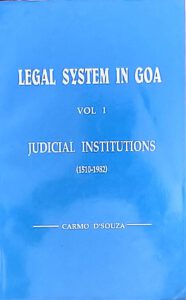
Legal System in Goa, Vol. 1, Judicial Institutions (1510-1982), by Carmo Souza, [Self-published, 1995] pp. 189; Rs 150
Carmo Souza's book on the legal system in Goa is a welcome addition to the literature on a subject hitherto found only in Portuguese. Originally his doctoral thesis submitted to the University of Poona, it traces the developmental history of the judicial system in Goa from 1510 to 1982. This had been singled out for praise by the then chief justice of India, Mr Y. B. Chandrachud, when he inaugurated the Goa bench of the Bombay High Court at Panjim, in 1982.
Logically, the present work should have been preceded by a study on the legislation and legislative institutions of the corresponding period, in an independent volume. This is now expected to be out shortly.
The present volume assumes importance for several reasons. The Portuguese were the first colonial power to set foot and control a vast Oriental empire. Once Goa became their headquarters, the Tribunal da Relação, or High Court, was established in the old city of Goa in 1544. It administered justice at the appeal level to all the Portuguese settlements from the Cape of Good Hope to the China seas. With them was formed the modern concept of international law in trade, commerce, and navigation.
In the introductory chapter, the author refers to old and modern judicial institutions in Portugal and compares them with those set up in the Estado da Índia. Chapter 2 gives a brief idea of the pre-Portuguese judicial system in Goa, including the Comunidades, and goes on to discuss twenty major offices and institutions that administered justice sectionally, that is, "taking into consideration the different interests and pressures rising in the cosmopolitan society created by a maritime empire.” That list includes, among others, the Tribunal da Relação (treated in detail in chapter 3) and the Holy Tribunal of the Inquisition which, says the author, quoting a contemporary (ex-) Jesuit historian, had “apparently won the confidence of the natives.”
Chapter 4 dwells on the tumultuous period from 1800 to 1961, which saw the advent of constitutionalism in Portugal. A new process began with the decrees of 1832/36. Goan territory expanded with the addition of the New Conquests, where the indigenous system of judicial administration was allowed to continue, and uniform dispensation of justice came only towards the end of the nineteenth century.
"Post-Liberation Judiciary” makes up the final chapter. It treats the dismantling of a “vibrant system”. Problems encountered in the transition phase are brought out.
('Panorama', The Navhind Times, 1 Oct 1995. For longer version of the review, see 'Long Arm of the Law', in Herald - The Illustrated Review, 15-30 June 1995)
Love in Verse
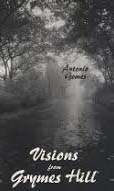
VISIONS FROM GRYMES HILL, by António Gomes. Turn of River Press, 1994, 95 pp. Rs. 100
António Gomes, a eleven-year Goan veteran of Mount Sinai Hospital, New York, is presently metamorphosed into a poet-philosopher. He examines the chemistry of suffering and joy, and attempts to decipher the mystery of life and death. After his wife died of cancer, in 1989, he thought he would never write poetry again. His inner world had been shattered by her departure. But God and Time are better healers than all our earthly physicians put together, and Gomes gradually came to terms with his loss and became whole again.
Visions from Grymes Hill is divided into two sections: “The Twilight Landscape” and “Poet’s Den”. In the first, the poems are more personal, reflecting his intense pain on the death of Marina. Gomes feels helpless that as a doctor he could not save her life. As he confesses in the Preface, “a doctor, a scientist and a heart specialist, I was engrossed in the miracles of Science. Yes, indeed! Science for me then was the one god I knew and understood above all gods. I was angry at this god for abandoning me. This god through whose intercession I had often mended the hearts of many men and women.”
Death laid its icy hands of her like an untimely frost upon the sweetest flower on all the field. The poet, unable to save her, is now in search of her. The poem “Visions” is a series of dreams reflecting this search, if not to find her – to find the answer. Born into a Roman Catholic family from Loutulim, Gomes now presents himself as an eclectic philosopher travelling through Hindu and Buddhist mythologies to find “the noble truth of the cessation of suffering” through “renunciation”.
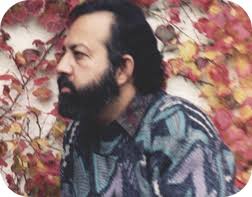
The sad and humdrum life of a lonely man is reflected in the tone of some of the verse; but the sombre atmosphere turns to light whenever the poet chances upon the understanding of the mystery of life. Then he transcends his troubles and marvels at the myriad colours of human nature. His magnanimous heart looks upon the suffering of the “beggar and the hungry child”; his singing soul revels in music and dance as he draws the fine “portrait of a jazz pianist”, and Stan Getz.
Despite the magical confusion of his inner world, Gomes does spare a thought for Tiananmen Square and the Berlin Wall, communist dictatorships and Mikhail Gorbachev. All this is woven into his sensibility but he compulsively returns to “the image of my dear sick wife/Falling, rising, struggling/ Beautiful and hopeful to the very end”. Beautiful and hopeful, which is why even while a window closes on him with loss and sorrow another opens up with joy and hope. And as he turns his back on the images of the fateful year of 1989 “I welcome 1990, dancing with Tania, my only child”.
The “Poet’s Den” is an epic poem in which we follow the poet’s journey to disparate worlds and cultures. On seeking inspiration from the muse to write an epic, the poet is taken to a den where he encounters dead poets, ancient and modern. We are thus privileged to listen in on his intimate and far-reaching conversations with the great Bards from Dante, Goethe, Rilke, and Camões to Whitman, Tagore and Neruda.
The thematic range of this Section goes from the personal and religious to the social, economic and political. The issues reflect the events of the late 1980’s and early 90’s, “new challenges that have the immense potential of changing our world and our civilization”. Curiously, in these poems, written in the form of dialogues, Gomes blends his own poetry with that of the bards he encounters.
In Visions from Grymes Hill, which is his residence at Mount Sinai, António Gomes comes out as a man with the heart of a physician and the soul of a poet. Most touching is his line in the Preface: “I hope that those who read this book or parts of it will find these poets healing”. Witness the selflessness, the devotion, and the magnanimity of a fine doctor and sincere husband who invites us to partake of the pathos and passion of being fully human. The reader cannot help wishing that the poems have been cathartic for the writer himself.
(Herald -The Illustrated Review, 1-15 Sep 1995)
The long arm of the law

Legal System in Goa, Vol. 1, Judicial Institutions (1510-1982), by Carmo Souza, [Self-published, 1995], pp. 189, Rs 150
With the debate on the Uniform Civil Code picking up in the country, the history of the legal system in Goa can well be expected to come into focus very soon. Our Civil Code, framed by the Portuguese and still in force, as well as the judicial system developed by them, had been the object of praise for the then chief justice of India, Y. B. Chandrachud, when he opened the Goa bench of the Bombay High Court in Pangim, in 1982.
Carmo Souza's book on the legal system in Goa is a welcome addition to literature on the subject hitherto found only in Portuguese. Originally his doctoral thesis submitted at the University of Poona, this academic presentation traces the developmental history of the judicial system in Goa from 1510 to 1982. Logically, this should have been preceded by a study of the legislation and legislative institutions of the corresponding period, in an independent volume. But this will hopefully come as a sequel.
The present volume assumes importance for several reasons. The Portuguese were the first colonial power to set foot and control a vast Oriental empire. Once Goa became their headquarters of the empire, the Tribunal da Relação, or High Court, established in the old city of Goa in 1544, administered justice at the appeal level to all the Portuguese possessions and settlements from the Cape of Good Hope to the China Seas. With them was formed the modern concept of international law in trade, commerce, and navigation.
In the introductory chapter, the author refers to old and modern judicial institutions in Portugal and compares them with those set up in the Estado da Índia. Chapter 2 gives a brief idea of the pre-Portuguese judicial system in Goa, including the Comunidades, and goes on to discuss twenty major offices and institutions that administered justice sectionally, "taking into consideration the different interests and pressures arising in the cosmopolitan society created by a maritime empire.” That list includes, among others, the Tribunal da Relação (treated in detail in chapter 3) and the Holy Tribunal of the Inquisition which, the author says, quoting a contemporary (ex-) Jesuit historian, had “apparently won the confidence of the natives.”
Chapter 4 dwells on the tumultuous period from 1800 to 1961, marked as it was by the advent of constitutionalism in Portugal. A new process began with the decree of 1832/36. Goa saw the addition of the New Conquests, wherein the indigenous system of judicial administration continued. Uniform dispensation of justice came only towards the end of the nineteenth century.
"Post-Liberation Judiciary” makes up the final chapter. This treats the dismantling of "a vibrant system”. Problems encountered in the transition phase are brought out. Interviews with judges and lawyers of the erstwhile regime, if included here, might have thrown more light on the topic.
Souza attempts to provide insight into whether certain institutions under the civil law system may be used in the Anglo-Indian system and the possibility of creating healthy hybrid institutions. He mentions the possibility of Goa having a High Court of its own.
Legal system in Goa is not critical as to advance any value judgements. This does not, however, detract from the rich documental value and the pioneering effort at systematization undertaken by Carmo Souza of a much neglected body of knowledge. His work could well serve as a background for the studies of judicial institutions of erstwhile Portuguese colonies in Asia, Africa and South America too.
(Herald - The Illustrated Review, 15-30 June 1995. A shorter version of this review, titled 'Fresh Legal Insight', appeared in 'Panorama', The Navhind Times, 1 Oct 1995)

